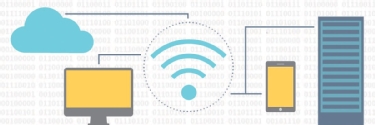Networking
Definitions about networking including routing and switching vocabulary, telecom terminology and words about email, messaging and mobile.

High-speed networks
Terms related to high-speed communication networks, including network and end-system architecture definitions and words and phrases about high-bandwidth and low-latency communication.
-
net neutrality
Net neutrality is the concept of an open, equal internet for everyone, regardless of content consumed or the device, application or platform used.
-
What is VoIP (voice over Internet Protocol)?
VoIP (voice over Internet Protocol) is the transmission of voice and multimedia content over an internet connection.
-
service-level agreement (SLA)
A service-level agreement (SLA) is a contract between a service provider and its customers that documents what services the provider will furnish and defines the service standards the provider is obligated to meet. A service-level commitment (SLC) is a broader and more generalized form of an SLA.
Network Admin
Terms related to managing computer networks, including definitions about LANS or WANS and words and phrases about network design, troubleshooting, security and backups.
-
remote access
Remote access is the ability for an authorized person to access a computer or network from a geographical distance through a network connection.
-
network scanning
Network scanning is a procedure for identifying active devices on a network by employing a feature or features in the network protocol to signal to devices and await a response.
-
high availability (HA)
High availability (HA) is the ability of a system to operate continuously for a designated period of time even if components within the system fail.
Network hardware
Terms related to network hardware, including definitions about cables or file servers and words and phrases about routers and switches.
-
high availability (HA)
High availability (HA) is the ability of a system to operate continuously for a designated period of time even if components within the system fail.
-
networking (computer)
Networking, also known as computer networking, is the practice of transporting and exchanging data between nodes over a shared medium in an information system.
-
local area network (LAN)
A local area network (LAN) is a group of computers and peripheral devices that are connected together within a distinct geographic area, such as an office building or campus.
Networking and communications
Terms related to networking and communications, including definitions about network protocols and words and phrases about data transmission.
-
What is a SSL (secure sockets layer)?
Secure sockets layer (SSL) is a networking protocol designed for securing connections between web clients and web servers over an insecure network, such as the internet.
-
remote access
Remote access is the ability for an authorized person to access a computer or network from a geographical distance through a network connection.
-
OAuth (Open Authorization)
OAuth (Open Authorization) is an open standard authorization framework for token-based authorization on the internet.
Wireless and mobile
Terms related to wireless and mobile technology, including definitions about consumer mobile technology devices and communication technologies such as Wi-Fi, WiMAX and LTE.
-
4G (fourth-generation wireless)
4G is the short name for fourth-generation wireless, the stage of broadband mobile communications that supersedes 3G (third-generation wireless) and is the predecessor of 5G (fifth-generation wireless).
-
GPRS (General Packet Radio Service)
GPRS (General Packet Radio Service) is a best-effort packet-switching protocol and standard for wireless and cellular network communication services.
-
high availability (HA)
High availability (HA) is the ability of a system to operate continuously for a designated period of time even if components within the system fail.